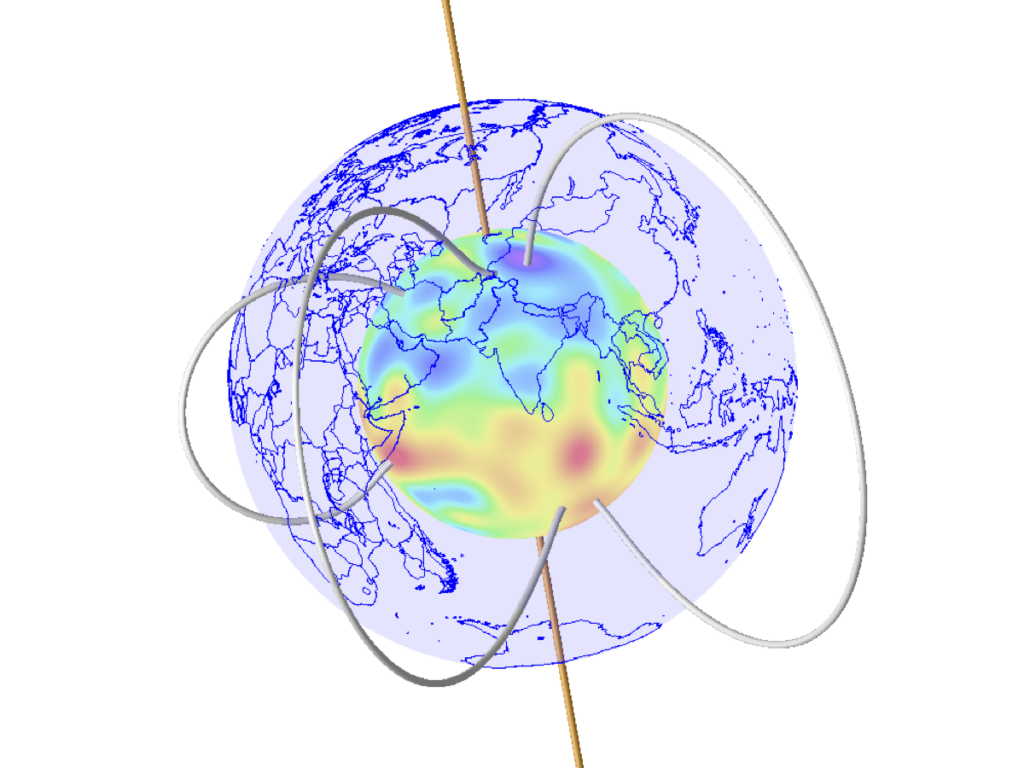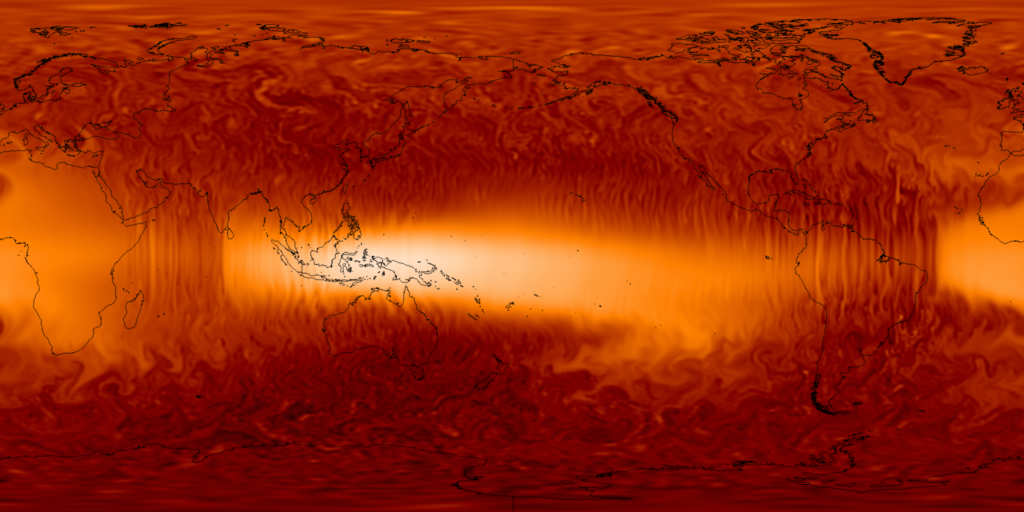Understanding Reversals of Earth’s Magnetic Field

Background
Earth’s core has generated a magnetic field for billions of years. However, the nature of that field has varied considerably through time for reasons that are still poorly understood. Both the average strength of the field and the average frequency of geomagnetic reversals have changed over timescales of 100s of millions to billions of years. These changes relate to fundamental questions about the evolution of Earth’s deep interior. Why do magnetic reversal occur? Are there precursors to reversals? How does the mantle influence core convection and hence the magnetic field? How has the rate of core and mantle cooling changed through time? What is the age of the inner core?
The Science Questions for this Project
Magnetic polarity reversals are one of the most dramatic and well-known features of the geodynamo process. However, the mechanism by which the field reverses remains poorly understood. Previous attempts to study reversals in numerical simulations have failed to match the balance of magnetic to kinetic energy in Earth’s core. This suggests that the mechanisms at play in those simulations over-estimate the importance of inertia in the reversal process. Recent theoretical and numerical improvements have allowed simulations to reach a more realistic energetic balance, opening up a new avenue for studying the details of Earth-like magnetic reversals.
Not only does the Earth’s magnetic field sporadically reverse, but the average frequency of reversals has varied greatly over geological time. The recent field has reversed about 5 times per million years, whereas during the Cretaceous normal superchron there were either no, or very few, reversals for nearly 40 million years. The timescales over which the reversal frequency has changed is much longer than any timescales associated with the internal dynamics of the convecting liquid iron outer core. Therefore, the change in reversal frequency is likely related to external factors arising from the thermochemical evolution of the planet. One possibility is that the distribution of heat extracted from the core has changed over geological time due to the evolving patterns of mantle convection and plate tectonics. However, previous attempts to reconcile mantle circulation models with simulations of reversal frequency generally suggest that the Cretaceous would be a time of high reversal frequency – the opposite of what is observed! This previous work did not made use of the new simulation approach that generates low inertia reversals.
This project will focus on understanding the behaviour of magnetic reversals in low inertia simulations of Earth’s core. Do they have precursors? Do they have asymmetric decay and growth of total field intensity as observed paleomagnetically? Is their frequency influenced by the magnitude or pattern of heat flow across the core-mantle boundary? Does this provide a way to resolve the mismatch between simulated and observed reversal frequency variations in previous studies?
How the Questions will be Investigated
A combination of increased computing power and faster numerical implementations (enabling simulation of more Earth-like conditions) and better theoretical understanding (allowing more robust extrapolations of those simulations) means that we are now well placed to investigate fundamental questions around Earth’s magnetic reversals. You will run new simulations of the core to investigate both individual magnetic reversals and the long-term evolution of reversal frequency as mantle convection patterns change. You will compare the simulated reversals to paleomagnetic observations, building on established collaborations between Leeds and colleagues at the University of Liverpool and the Scripps Institute of Oceanography.
Overall, through this project you will shed new light on fundamental questions in deep Earth geophysics concerning the influence of the mantle on core convection, the nature of magnetic reversals, and why their characteristics change through time.

Related reading:
Jones, C. and Tsang, Y.K. Low inertia reversing geodynamos. arXiv preprint arXiv:2408.07420 (2024).
Terra-Nova, F. and Amit, H. Regionally-triggered geomagnetic reversals. Sci. Rep. 14, 9639 (2024).
